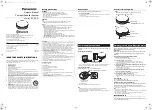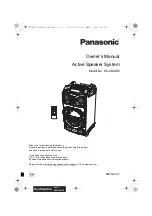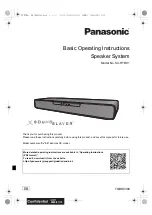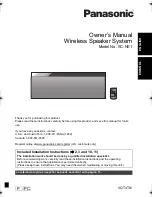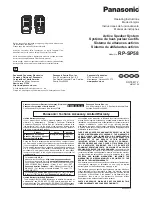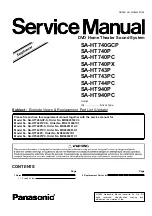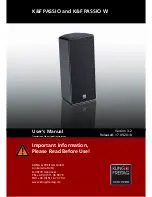
oport bracket is secured with a clamp to the front-to-rear brace
;he 4350 enclosure. Removal is accomplished by unbolting
j clamp from the enclosure brace, taking out the four screws
'•ng through the baffle panel to the horn flange, a n d lifting
^.ver/horn/bracket assembly from the enclosure The horn
d bracket can then be unbolted from the compression
ver Caution To avoid the possibility of personal injury, be sure
oroperiy support the dnver/horn/bracket assembly
while
noving the mounting screws holding the horn to the baffle
iei. since the assembly weighs approximately l3HKg [30 lb)
*o convert the 4350 to right-hand configuration, toe high
quercy dnve'/horn/bracket assembly wilt have to be
archanged with its corresponding cover plate on the right of
baffle panel. (The 2405 ultra-high frequency driver w:li also
/e to be interchanged with its respective cover plate, as
scribed in the following paragraphs) The cover plate is
;ured behind the baffle panel by four machine screws threaded
•> T-nuts. The support bracket must be taken off thednver/horn
;embly. rotated t80°and reattached to the rear flange of the
m using the original hardware (lockwasners are used under
heads ol tne two oolts that secure the ©racket} The entire
;emoiy can then be insta'iec on the baffie panel and the
jport bracket clamp bolted to the internal brace on the right
e of the enclosure. Finally, install the cover plate behind the
•n cutout on the left side of the baffle panei using the screws
t heid it in its original location.
"-High Frequency-The
2405 ultra-high frequency driver is
,d through the baffle panel from inside the enclosure and
leld in place by four machine screws. To achieve tne desired
persion pattern the unit must be positioned so that the
raction slot is oriented vertically.
Vhen moving the 2405 to the right-hand configuration the
responding cover plate on the right side of the baffie panel
st be removed and reinstalled behind the opening originally
:upied by the ultra-nigh freauency driver The cover plate is
d m place with tour machine screws threaded nto T-nuts The
ne mounting screws are to be used to install the cover plate
the left side of the baffie pane!.
iding Network-Remove
the transducers as previously
icribed. pull the lead wires from the midrange sub-chamber
] disconnect the input leads to the dividing network at the tab
inectors attached to the input terminals on the back panel,
de the enclosure. The ultra-high frequency ieve
i
control is
unted on a sub-panel secured to tne back of the enclosure
fie panel by two machine screws extending through the panel
) threaded fasteners To gam access to tne contro . carefully
j|
oft the serialized foil namepiate. remove the mounting
ews and place tne control assembly on the bottom of the
:losure. The network itself is mounted on the bottom pane; of
encosure and is held in place by six machine screws and
After removing the mounting screws, the
networK
ano
mol assembly can oe lifted out of the enclosure through
er of the low freauency loudspeaker openings
e: Malfunction of the networK is highly unlikely. Since the
namepiate generally is destroyed ir removal, tt ;s not recom-
mended that the network be removed simply for the purpose
of inspection
Replacement-
Reverse the remova: procedure to replace the
system components. Mounting screws for all devices should be
tightened evenly and iust tight enough to prevent air leaks
Although J B L loudspeakers are extremely rugged, the cone and other
moving parts are subject to accidental damage. E x e r c i s e extreme
caution whenever using a screwdriver or other tools In their immediate
vicinity. Whenever the horn is removed from the compression driver,
the mouth of the driver should be covered with plastic tape. An intense
magnetic field exists in the mouth ol the driver, and It is extremely
Important that foreign objects such as Iron chips, other metallic
contaminants, mounting hardware or tools be kept from the area.
M a i n t e n a n c e
The grille cloth is a double-knit polyester fabric selected for
acoustic transparency, beauty, physica' strength, color fastness
and sod resisiance It can be cleaned by gently dusting it with a
vacuum cleaner Stains can be removed by using aerosol
cieaners. such as Texize
K2r
Goddard's
Dry Clean, or
Pen
Champ
Quick 'n Easy
according to eacn manufacturers
instructions.
Warning: Cleaning fluids or other solvents should not be used. Although
they may appear to remove a stain, liquid cleaners will dissolve the
b a s e paint on the grille frame beneath the cloth, resulting in permanent
discoloration of the material.
Occasional dusting with a clean, soft cloth will maintan the
finish of the enclosure Since both the textured gray and oiled
wainut surfaces are moisture resistant, a damp c<oth will remove
most stains Mild detergent may be used on the gray finish to
remove smudges or more persistent stains. Conventional
furniture waxes or polishes should not be used; tne oiled walnut
enclosure, however, may be treated with wax specifically
formulated for such surfaces
The walnut finish may appear to age. or dry out a s the oil
penetrates deeper and deeper into the veneer it may, therefore
be desirable to re-oil the enclosure surface from time to time.
With each application, the oeauty of the finish will become more
obvious, and a warm, rich patina wiil eventual y be obtained
To re-oil a J B L oiled walnut finisn use any one of me severa
clear oil finishing preparations available through furniture or
hardware outlets. Apply a liberal amount of the oreparation over
the entire finished surface of the enclosure. In ten to fifteen
minutes wipe off the remaining oil with a soft, clean, dry cloth
S m a / surface scratches can usually be removed by gently
rubbing them witn very fine sieel wool (4/0 grade) anc applying
oil to the entire panel Very deep scratches, dents or other serious
damage should oe repaired only oy a Qualified furniture refmtsner
Caution: Improper storage of wiping rags could result In spontaneous
combustion. They should be thrown away or spread out to dry in a
well-ventilated area before storage or disposal.






